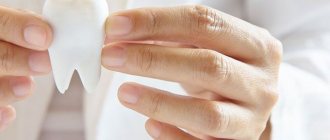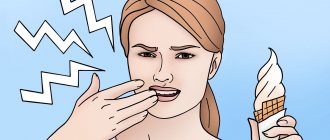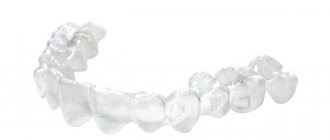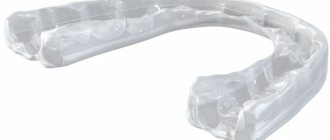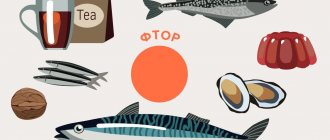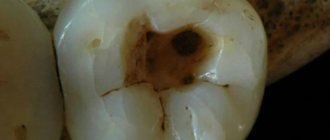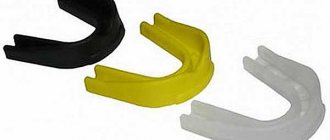Glucose is the main source of energy for the human body. It can enter the body as part of sweets or as part of more complex carbohydrates. The latter option does not have a negative effect on the oral cavity. But fast carbohydrates (or, more simply, sugar) destroy teeth and lead to the development of many diseases.
Almost all people are aware that sweets are harmful to teeth. But not everyone knows why sugar is harmful to teeth
What are the dangers of sweets?
Almost all sweet products: sugar, soda and syrups, jam, confectionery, sweet fruits (bananas, strawberries) are classified as simple carbohydrates. Such foods are broken down very quickly in the body and increase the amount of glucose in the blood, adding energy. This is effective before sports. When energy is not wasted, it is deposited in the form of fat reserves.
To break down and absorb simple carbohydrates, the body needs B vitamins and calcium. Teeth become a source for quickly obtaining the necessary macronutrients.
If the diet does not have enough vitamins and calcium, and a person consumes sweets excessively, then the expended reserves of necessary substances do not have time to be restored. This is how the process of internal tooth decay occurs. During this process, the enamel becomes thinner and caries develops.
Top 3 dangerous sweets
Dentists are unanimous in their opinion: all sugar-containing products are harmful to teeth. However, among these sweet enemies there are three main villains that can cause irreparable harm to crowns and gums. Meet:
- Princess Caramel . Yes, fresh lemon montpensiers and flavored peppermint candies are 58% sugar. That is, when you watch cartoons with your baby and enjoy countless caramels together, consider that you are eating sugar together with spoons. Moreover, lollipops take a long time to dissolve and, being in the mouth for a long time, activate the growth of bacteria that damage the enamel.
- Toffee's maids of honor . Kids love to enjoy delicate creamy toffees at any time of the day or night. However, such sweets stick to the teeth while chewing, and most importantly, they fill the interdental spaces with sugar. The sweet substance takes a long time to dissolve and provokes the growth of bacteria that are harmful to the enamel. By the way, it is toffee lovers who are most often diagnosed with caries in the spaces between their teeth.
- King Chocolate . Unfortunately, like caramel, chocolate and chocolate products consist of more than 50% sugar. And if dark chocolate is not so harmful, then children’s favorite milk and white sweets have a detrimental effect on teeth.
Sweet soda, kvass and cheap packaged juices are also harmful to children's teeth. These products also contain a significant dose of sugar.
As we have already said, sugar has a bad effect not only on the condition of your teeth. This sweet powder destroys both bones and the cardiovascular system, and also increases appetite and causes the release of insulin into the blood.
Favorable environment for bacteria
There are always bacteria in the mouth, even if you brush your teeth regularly. They do not react with meat products, most vegetables and fish. Such foods do not affect the condition of teeth.
Why do teeth react with sweets, and what happens when simple carbohydrates enter the body? Simple carbohydrates react with bacteria, resulting in the formation of organic acid in the oral cavity, which has a negative effect on the surface of the teeth. As a result of these processes, the enamel becomes thinner, destroyed and caries begins to develop.
Saliva contains special substances that can neutralize harmful organic acids. With the regular intake of sweets into the oral cavity in large quantities, the body is not able to fully protect tooth enamel.
All clear. I won't eat sweets, is that enough?
No, unfortunately, this is not at all enough.
Nowadays, the concept of “added sugar” has appeared; it is found in products where it should not normally be present. Sugar appears in kindergarten borscht and vegetable stews, if you check the technological map, and is found in store-bought sauces, semi-finished products, bread, packaged juices, baby formula and yoghurts. Bread can be as varied as you like with sprouted grains of all kinds of crops, but almost every “brick”, every “loaf” contains about 4 tablespoons of sugar. The inscription “sugar-free” on the label is currently even more alarming than the honest sugar in the composition.
Sugar has many synonyms in the food industry: molasses, molasses, grape sugar, coconut sugar, brown rice syrup, glucose-fructose syrup, maltodextrin, honey, invert sugar, agave syrup, Jerusalem artichoke syrup - about 60 names in total.
When we eat a cereal bar, we first get a dose of broken down carbohydrates and only then the potential benefits of a piece of fruit or traces of grains.
Russian “Japanese” cuisine can be distinguished separately - to prepare rice for sushi, rice vinegar and sugar, ginger and Wasabi seasoning, Teriyaki and Blue Cheese sauces, which also contain sugar, are used. Instead of immodest fish and rice, it’s more honest to eat a chocolate bar.
It is the added sugar that poses the biggest problem - while we can consciously give up obviously sugary foods, such as candy and baked goods, then the added sugar is hiding in places we didn’t expect.
Harmful sweets
Dentists are convinced that any sweets have a negative effect on the tooth surface. However, some treats are extremely dangerous.
The following sweets cause maximum damage to teeth:
- Iris . All chewing candies stick to the surface of the teeth and become clogged in the interdental spaces. Because of this, the remains of such treats remain in the mouth for a long time. They cause the growth of pathogenic bacteria and the production of organic acid, which damages the enamel.
- Caramel . All kinds of candies, as well as creamy caramel, consist of a large amount of sugar (more than 50%). Such sweets are designed to be absorbed, which means they stay in the mouth for a long time and have a detrimental effect on the teeth.
- Chocolate . Chocolate products, like caramels, consist of 50% sugar. Therefore, the consumption of this kind of treats, especially in large quantities, is not recommended.
Dark chocolate causes the least damage to tooth enamel. This product contains less sugar and is enriched with tannins, which disinfect the oral cavity and slow down the growth of pathogenic microorganisms.
How to reduce the effect of sugar on your teeth?
When consuming sweets, you can use a number of recommendations to reduce the harmful effects on enamel. These include:
- Drink enough fluids (to ensure that bacteria and sugar residues are washed away).
- Eating sweets after the main meal (when a large amount of saliva remains in the mouth).
- Refusal of frequent snacks, especially sweets (the more often you eat, the more bacteria will form, especially if you eat sweet foods).
- Daily careful personal hygiene (you need to not just brush your teeth twice a day, but also follow all the rules: brush for at least 2 minutes, don’t forget about your tongue, choose the right brush, toothpaste, use dental floss, mouthwash).
To avoid negative consequences, do not forget about preventive visits to the dentist, especially if you like to eat sweets.
Natural pests
Not only sucrose, which is part of chocolate and sweets, but also fructose, which is found in some fruits and berries, has a harmful effect on tooth enamel.
Dentists recommend minimizing the consumption of the following treats:
- Dried fruits . Sweet prunes and raisins contain a large amount of fructose. This substance affects tooth enamel in almost the same way as sucrose. Dried fruits have an inherent viscosity, not unlike toffees. This means that they can also get clogged between the teeth and remain in the oral cavity for a long time.
- Candied fruits . Pieces of dried mango, kiwi and pineapple attract attention with their “naturalness”. However, candied fruits are sprinkled with sugar and sometimes tinted with dyes, which makes them little different from ordinary sweets.
- Sour fruits . Citrus fruits (oranges, lemons) cause significant damage to teeth. They contain a large amount of fruit acids, which can corrode enamel in the same way as candy.
Teeth love
- regular visits to the dentist at least once every six months;
- daily brushing of teeth 2-3 times for 3-4 minutes;
- a hygienic toothbrush, selected according to the condition of the gums and the effectiveness of cleaning;
- regular change of brush (every 2 months) and paste (so that microbes do not adapt to the antibacterial composition of the same paste);
- caring not only for teeth and gums, but also for the tongue – this is where bacteria often accumulate;
- daily massage of the gums with a brush to prevent periodontal disease;
- use of dental rinses with an antibacterial effect;
- sugar-free gum – after eating, it is recommended to chew sugar-free gum for 10-15 minutes to mechanically clean your teeth;
- raw fruits and vegetables for dessert - these products promote mechanical cleaning of teeth and intense salivation to remove debris from the oral cavity;
- rough food, which prevents the formation of tartar and helps to develop the jaws to increase their chewing activity;
- eating low-fat cheese is useful after meals to form cleansing saliva and protect tooth enamel;
- natural low-fat yoghurts and other calcium-rich dairy products without sugar or fruit fillers;
- calcium-rich foods: dairy products, broccoli, figs, sesame seeds and others;
- products containing phosphorus - they are necessary for the proper absorption and distribution of calcium, strengthening enamel and protecting against caries. Phosphorus is found in eggs, milk, beef, fish and seafood, nuts and black tea;
- Vitamin D ensures the absorption of calcium and phosphorus, and a lack of this microelement leads to the formation of tartar. Sources of vitamin D include mushrooms, fish, eggs and sunlight;
- iron in foods such as red meat, organ meats, beans, buckwheat and apples. This microelement is necessary to maintain normal blood circulation in the gums and blood supply to the teeth;
- Vitamin C – needed to maintain healthy gums. Vitamin C-rich citrus fruits, apples, cabbage, onions and other natural foods prevent the development of scurvy and other diseases;
- Vitamin B6 is essential for the health of the body in general and the oral cavity in particular. Vitamin B6-rich red vegetables and berries, nuts, spinach, beef liver and other foods protect against the development of cracks and wounds in the oral mucosa.
To maintain healthy teeth, you don’t have to go on a diet and carry a toothbrush with you all the time. It is enough to reconsider your diet and lifestyle a little to notice a positive result in improving the condition of your teeth and gums.
How to minimize harm from sweets
The best option is to completely give up sweets. But for most adults, and especially for children, this option is unacceptable. According to statistics, there are very few people who are absolutely indifferent to sweets.
There are some recommendations for proper consumption of sweets, following which helps reduce the negative impact of sweets on teeth.
- The right treats . Experts recommend eating soft, but not sticky treats. For example, instead of toffees and marshmallows, it is better to choose cream cakes. They do not stick to tooth enamel and are easily removed after a couple of sips of drink.
- Sweets after meals . This rule is often voiced by parents to their children. After all, by eating sweets, you can “kill” your appetite. Dentists state this rule a little differently. During a meal (eating soup or side dish), a process of abundant saliva production occurs in the oral cavity. It is in this environment that sweets should be placed in order to neutralize organic acid as much as possible.
- Diet . Eating sweets should not be spread out over the whole day. It is recommended to eat the entire portion at one time. Constant snacking on sweets, cookies and chocolate regularly feeds bacteria. Such eating of sweets can lead to rapid destruction of enamel and the development of caries.
- Maintaining hygiene . From early childhood, you need to teach your child to brush their teeth. To reduce the negative impact of sweets on your teeth, you need to rinse your mouth after eating it. If this is not possible, then rinsing can be replaced by short-term use of chewing gum.
Buns and cakes
If we are talking about baking, then there is only danger from nutritional science. Various rolls, pastries, cakes with different creams - protein, sour cream, butter - do not harm your teeth at all. The same principle works here as with chocolate: such sweets do not stay in the mouth for a long time, we chew them and again stimulate the washing of the teeth with saliva, followed by their mineralization. Therefore, this option can also be called harmless to human teeth.
So fickle! How to protect baby teeth from caries Read more
What to replace unhealthy sweets with
Not all sweets are harmful to the body. Some treats can be beneficial. Dentists advise replacing harmful toffees and caramels with the following products:
- Honey _ It is a natural product rich in glucose and fructose. However, honey also contains a large amount of useful substances, vitamins, amino acids and minerals.
- Nuts . Most nuts combined with honey can replace any candy. Unlike confectionery sweets, nuts saturate the body with protein.
- Berries and fruits . Healthy alternatives to candy include pears, apples, raspberries or cherries.
- Dairy desserts . Natural yogurt with berries or cottage cheese with fruits also have a sweet taste. At the same time, dairy products are rich in vitamins and calcium.
Before you eat another piece of delicacy, you need to remember that it can not only hit your figure, but also harm your smile.
Forgot about fructose. How are things going with her?
With fructose, everything is ambiguous.
Fructose, in fact, is not particularly needed by our body - practically no cells can absorb it in its pure form, so the liver converts fructose into glucose. This process uses enzymes that we don't have much of, so much of the fructose is immediately converted into fat. Let's imagine that by eating a regular cookie, we can burn off the resulting glucose by exercising while it circulates in the blood and has not turned into fat. This “trick” will not work with fructose-containing cookies.
Fructose is processed without the participation of insulin, but there are still more disadvantages in this situation: eating disorders, a very delayed feeling of satiety, and again metabolic syndrome, one of the signs of which is insulin resistance.
With fruits it's different. In them, fructose is bound to fiber, which slows down its release, and it is also extremely difficult to eat enough fruit to get a dose of sugar equivalent to a chocolate bar.
What complications may arise?
If your teeth hurt from sweets, then at a minimum, we are talking about the II degree of hyperesthesia - increased sensitivity of the hard tissues of the tooth to chemical and temperature irritants. Without treatment, it will go into the third degree of hyperesthesia, in which the tissues will begin to react to all irritants without exception - it will be painful to chew, brush your teeth, speak, and even breathe in cold air through your mouth. Not to mention that the cause of the pain will progress and ultimately lead to necrosis of hard tissues and tooth loss.
